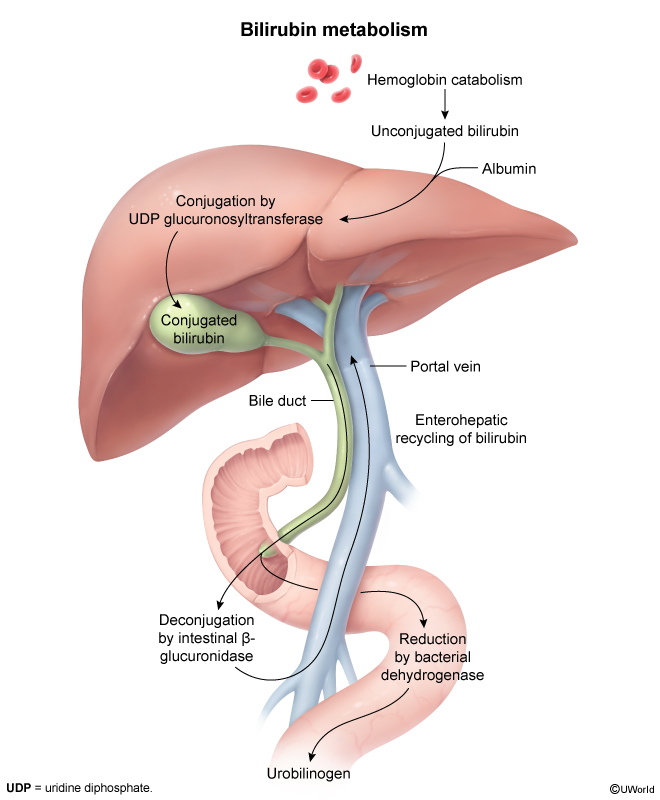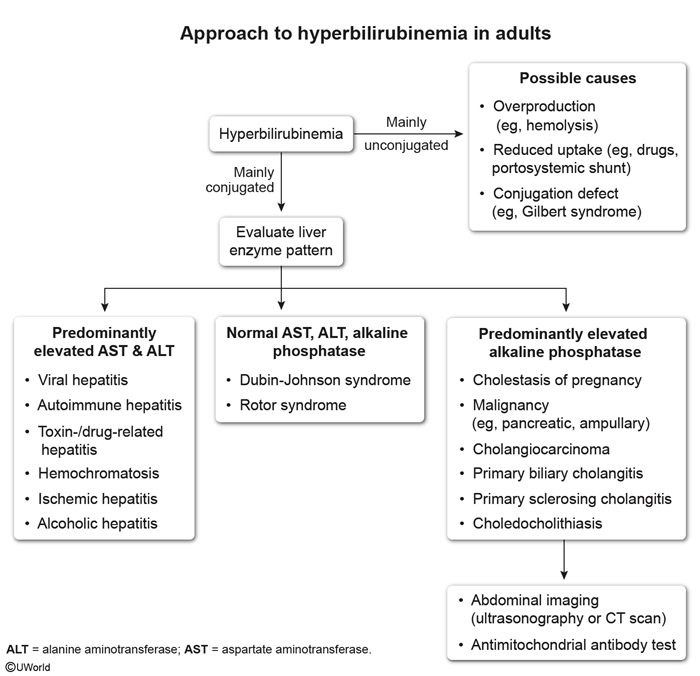Bilirubin Metabolism
Article Sections
Introduction
Bilirubin is a yellow pigment produced from the breakdown of heme-containing proteins (primarily hemoglobin). Although it can function as an antioxidant at physiologic levels (ie, bilirubin-biliverdin redox cycle), bilirubin can be toxic in excess. Bilirubin metabolism is a multistep process that is essential for maintaining normal physiologic levels and preventing toxic accumulation of bilirubin.
Bilirubin metabolism
Bilirubin production and metabolism involve production, metabolism, and excretion.
Bilirubin productionApproximately 80% of bilirubin is a by-product of hemoglobin metabolism in senescent red blood cells. The remaining 20% is a by-product of the metabolism of other heme-containing proteins (eg, myoglobin). The first step in bilirubin formation is the conversion of heme to biliverdin by the enzyme heme oxygenase. Next, biliverdin is reduced to unconjugated bilirubin (indirect bilirubin) by the enzyme biliverdin reductase. Because unconjugated bilirubin is lipophilic, it is not water-soluble and must bind albumin for transport to the liver.
Continue Learning with UWorld
Get the full Bilirubin Metabolism article plus rich visuals, real-world cases, and in-depth insights from medical experts, all available through the UWorld Medical Library.
Figures

